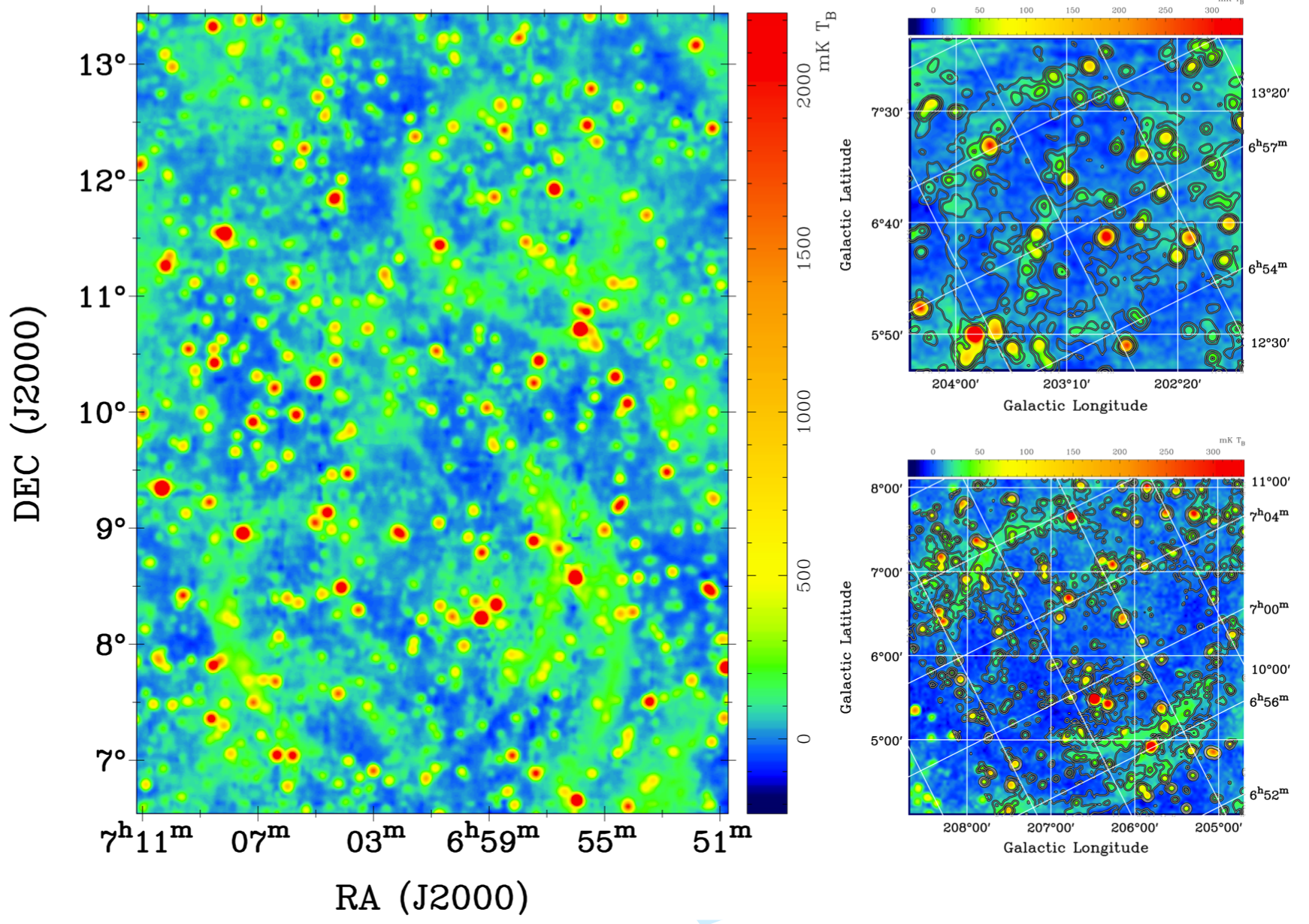
Figure: Left: FAST L-band total intensity image for G203.1+6.6 and G206.7+5.9 with an angular resolution of about 4 arcmin. Right: Effelsberg λ11 cm total-intensity images of G203.1+6.6 (top) and G206.7+5.9 (bottom).
Radio continuum surveys of the Galactic plane provide crucial observational data to get insight into the magnetism of the Galaxy and the physics of various radio sources, e.g., HII regions, supernova remnants (SNRs), planetary nebulae (PNe), and extragalactic sources. With the huge collecting area of FAST, the FAST GPPS survey provides sensitive full-polarizatiton products of radio continuum at L band. Some initial results have been obtained for a small sky area. However, much more efforts are still needed for baseline fitting and calibration.
As the first try for scanning for the continuum radio images, a 5°×7° sky area containing two large radio structures G203.1+6.6 and G206.7+5.9 has been mapped through radio continuum emission by using the FAST 19-beam L-band receiver. The receiver covers a frequency range of 1.0 GHz - 1.5 GHz, and the multi-channel spectroscopy backend mounted to the receiver allows an in-band spectral-index determination. The results clearly indicate a non-thermal synchrotron emitting nature of the two large structures G203.1+6.6 and G206.7+5.9, confirming that they are large shell-type supernova remnants (see Figure).
